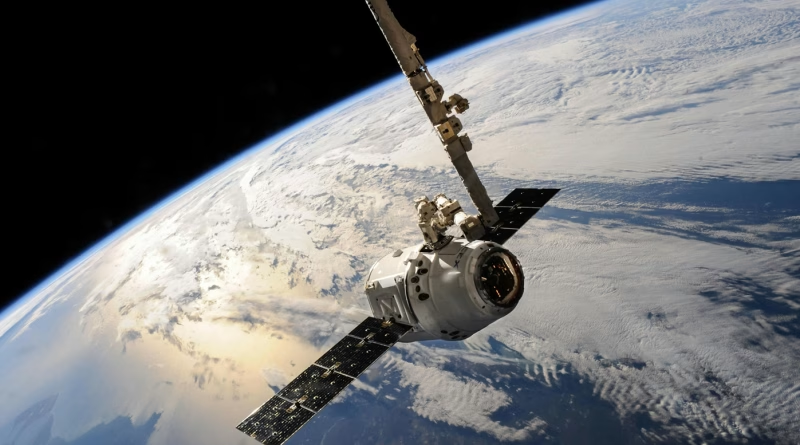Is Satellite Internet a Viable Option for You? A Look at Starlink and Competitors
For decades, “satellite internet” was a term that made tech enthusiasts shudder. It conjured images of massive dishes, data caps, and agonizingly slow connections with latency so bad that online gaming was impossible. It was the absolute last resort for those who had no other choice.
That reputation is now being completely rewritten from space.
A new generation of satellite internet, powered by massive constellations of thousands of small satellites zipping across Low-Earth Orbit (LEO), is delivering high-speed, low-latency broadband to every corner of the globe. Led by SpaceX’s Starlink, this technology is no longer just for remote cabins; it’s becoming a legitimate competitor to traditional wired internet.
But is it the right choice for you? Let’s break down what modern satellite internet is, its pros and cons, and who it’s actually for in 2025.
The Old vs. The New: Why LEO Satellites Change Everything
The key difference is altitude. Old satellite internet (from providers like Viasat or HughesNet) uses a few large satellites in a very high, geostationary orbit. Because the signal has to travel a huge distance to space and back, the result is incredibly high latency (or “ping”), which creates a noticeable delay in every online action.
New LEO constellations, like Starlink, place thousands of smaller satellites in a much lower orbit, hundreds of times closer to Earth. This dramatically reduces the travel time for the signal, resulting in low latency that is comparable to a ground-based cable or fiber connection.
The Pros: Why You Might Switch
The advantages of LEO satellite internet are compelling, especially if you’re unhappy with your current provider.
- Available Everywhere: This is the killer feature. As long as your dish has a clear view of the sky, you can get high-speed internet. It’s a game-changer for rural homes, remote workers, RV travelers, and anyone living outside the reach of traditional broadband infrastructure.
- High Speeds: Modern satellite services deliver impressive download speeds, typically ranging from 50 Mbps to over 200 Mbps—more than enough for 4K streaming, video calls, and downloading large files.
- No More Local Monopolies: For many people, their only “choice” for internet has been a single cable company with high prices and poor service. Satellite internet introduces powerful competition, which can force all providers to improve.
The Cons: The Inherent Trade-Offs
While revolutionary, the technology is not without its drawbacks.
- High Upfront Hardware Cost: You have to purchase the satellite dish (the “terminal”) yourself, which can be a significant one-time cost of several hundred dollars.
- Sensitivity to Obstructions: The dish requires a completely clear line of sight to the sky. It cannot be obstructed by trees, buildings, or other obstacles. Even a few seconds of obstruction can cause a service interruption.
- Weather and Congestion: While much more reliable than old satellite tech, extreme weather like very heavy rain or snow can still temporarily degrade the signal. In more populated areas, network speeds can also slow down during peak evening hours as more users connect.
- Not Ideal for Hardcore Gamers: While the latency is low enough for most uses, including casual gaming, it is still slightly higher and less stable than a wired fiber or cable connection. For ultra-competitive, fast-twitch online gaming, a wired connection remains superior.
The Players: Starlink and Its Rising Competitors
- Starlink (SpaceX): The undisputed leader and the only service with a massive, fully operational global constellation. It is the default choice for most people considering satellite internet today.
- Project Kuiper (Amazon): Amazon’s ambitious LEO constellation is now in its deployment phase. While not yet widely available to consumers, it promises to be a major competitor to Starlink in the coming years, likely with deep integration into the Amazon ecosystem.
- Eutelsat OneWeb: Traditionally focused on enterprise and government clients, OneWeb is another major player that could eventually offer a competitive consumer product.
The Verdict: Who is Satellite Internet Actually For?
- It’s a perfect solution if: You live in a rural or underserved area where your only other options are slow DSL or traditional high-latency satellite. It’s also a fantastic option for those who need reliable internet on the go, like in an RV or on a boat.
- It’s a viable alternative if: You live in a suburban area but are fed up with your local cable monopoly’s prices and service. If you’re not a competitive gamer, the performance is likely more than good enough for your needs.
- It’s probably not for you if: You live in a dense city and already have access to a reliable, gigabit fiber optic connection. Fiber still offers the most stable speeds and lowest latency for the ultimate power user.
Satellite internet has made a giant leap from a last resort to a powerful, mainstream option. For millions of people, it’s a revolutionary service that is finally bringing real competition and high-speed connectivity to the entire world.




